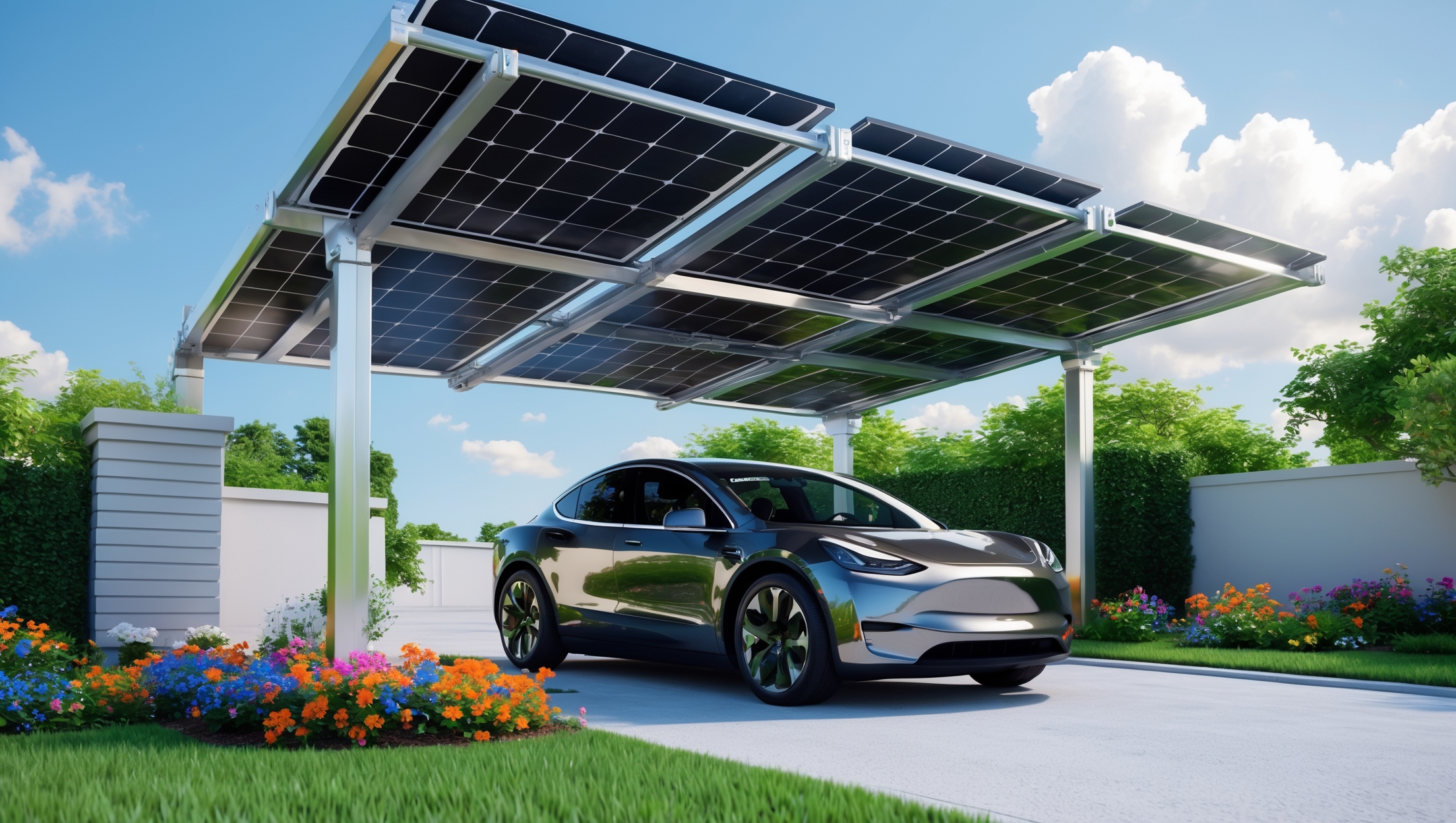Introduction: Why Safety Matters in Residential Solar Carport Installations
Solar carports are rapidly becoming a favorite among homeowners seeking to combine green energy generation with practical everyday utility. By leveraging the space above your driveway or parking area, you can generate clean electricity and shield your vehicle from the elements all at once. However, the installation of a solar carport is a significant project that blends electrical work, structural engineering, and site management. Safety is paramount—not just for your immediate well-being during installation, but also to protect your investment and ensure long-term, trouble-free operation. This guide provides a detailed, step-by-step safety checklist for installing a home solar carport. Whether you’re a seasoned DIYer or hiring professionals, understanding these safety essentials will help you avoid costly mistakes, prevent injuries, and guarantee your solar carport delivers sustainable benefits for years to come.
Pre-Installation Safety: Planning, Permits, and Site Assessment
1. Site Suitability and Hazard Identification
- Assess Ground Stability: Ensure the installation site is level, free of sinkholes or loose soil, and not susceptible to flooding.
- Clear Overhead Hazards: Check for power lines, tree branches, and other obstructions above the intended carport location.
- Underground Utilities Check: Contact local utility companies to mark gas, water, and electrical lines before digging for foundations or posts.
2. Permits, Compliance, and Documentation
- Obtain Required Permits: Secure all necessary building and electrical permits. Compliance with local codes is not just a legal requirement—it ensures safety standards are met.
- Engineering Review: If your area is prone to snow, wind, or earthquakes, have a structural engineer review your plans for load and resilience.
- Manufacturer Guidelines: Carefully read and understand all manufacturer installation manuals for both the carport structure and solar panels.
Personal Protective Equipment (PPE): What You Need and Why
- Hard Hat: Protects against falling objects during construction.
- Safety Glasses: Shields eyes from debris when drilling, cutting, or handling panels.
- Work Gloves: Prevents cuts and improves grip on sharp or heavy materials.
- Steel-Toe Boots: Essential for foot protection when handling heavy posts or panels.
- High-Visibility Vest: Increases your visibility to others, especially if working near a street or driveway.
- Insulated Tools and Gloves: Critical for any electrical work to reduce shock risk.
Structural Safety: Ensuring a Solid Foundation and Frame
1. Foundation Preparation and Pouring
- Secure the Work Area: Mark off the installation zone with cones or tape to keep children, pets, and bystanders away.
- Excavation Safety: Use proper shoring or bracing if digging deeper than 3 feet, and never leave open holes unattended.
- Mixing and Pouring Concrete: Wear a mask to avoid inhaling dust. Use a helper to manage heavy lifting and prevent overexertion.
2. Carport Frame Assembly
- Check All Fasteners: Use only specified bolts and hardware. Double-check torque settings to avoid under- or over-tightening.
- Safe Lifting Techniques: Use mechanical aids (lifts or hoists) for heavy beams. Always lift with your legs, not your back.
- Temporary Bracing: Support the frame with temporary braces until all structural connections are secure.
Electrical Safety: Wiring, Connection, and Power-Up
1. Before You Begin
- Power Down: Ensure all circuits you’ll connect to are de-energized at the main breaker panel.
- Lockout-Tagout Procedure: Use a lock and tag to prevent accidental re-energization during work.
2. Safe Panel Handling
- Two-Person Lift: Solar panels are heavy and fragile. Always use two people to lift and position them.
- Proper Storage: Store panels upright and on padded surfaces until ready for installation.
3. Wiring Best Practices
- Correct Wire Sizing: Use wires rated for the system’s voltage and amperage. Undersized wires can overheat and cause fires.
- Weatherproof Conduits: Protect all outdoor wiring in UV-resistant, waterproof conduit.
- GFCI Protection: Install Ground Fault Circuit Interrupter (GFCI) breakers on all outdoor circuits.
- No Live Connections: Never make or break connections under load. Double-check that all circuits are off before wiring.
- Labeling: Clearly label all junction boxes and disconnects for emergency responders.
4. Grounding and Surge Protection
- System Grounding: Bond all metal components to a dedicated earth ground per code requirements.
- Surge Arrester: Install surge protection devices at the inverter and electrical panel to protect against lightning or grid surges.
Weather Considerations: Working Safely Year-Round
- Avoid Wet Conditions: Never perform electrical work in the rain or on wet surfaces.
- Wind Awareness: Do not handle large panels or frame components if winds exceed 15 mph. Secure all materials if high winds are forecast.
- Heat Precautions: Schedule heavy labor for early morning or late afternoon to avoid heat exhaustion. Stay hydrated and take breaks in the shade.
- Cold Weather: Keep pathways clear of ice and snow. Use anti-slip mats to prevent falls.
Fire Safety: Prevention and Emergency Preparedness
- Fire Extinguishers: Keep a Class C (electrical) fire extinguisher accessible at all times.
- No Smoking: Prohibit smoking near the installation site, especially during electrical or flammable material handling.
- Emergency Plan: Know the location of shutoff switches and main breakers. Have emergency contact numbers posted and easily accessible.
Inspection and Testing: Ensuring a Safe, Compliant System
1. Pre-Commissioning Inspection
- Check All Connections: Verify every bolt, electrical connection, and conduit seal is secure and weatherproof.
- Structural Alignment: Ensure the carport is plumb, level, and square. Look for signs of stress or misalignment.
2. Electrical Testing
- Continuity and Insulation Testing: Use a multimeter or insulation resistance tester to check for short circuits and confirm proper insulation before energizing the system.
- Voltage Verification: Confirm the correct open-circuit and operating voltages at key points per manufacturer specifications.
- Professional Sign-Off: Have a licensed electrician inspect and sign off on all high-voltage work before connecting to the grid or home system.
Post-Installation: Ongoing Safety and Maintenance Tips
- Routine Inspections: Check mounting hardware, wiring, and panel surfaces for wear, corrosion, or animal interference at least twice a year.
- Debris Removal: Keep the carport roof clear of leaves, branches, and snow to prevent structural overload and maximize solar output.
- Inverter Monitoring: Regularly review inverter status lights or app-based monitoring for error messages or abnormal performance.
- Weather Event Checks: After storms, inspect for loose panels, damaged wiring, or shifted structural elements.
- Emergency Shutoff: Train all household members on how to safely shut off the solar carport system in case of emergency.
Conclusion: Safety Is the Foundation of a Successful Solar Carport
Installing a home solar carport is a rewarding project that brings together the best of sustainable living and modern technology. However, the benefits of clean, renewable energy can only be fully realized when safety is prioritized at every stage—from initial planning to long-term maintenance. By following this comprehensive safety checklist, you’ll minimize risks to yourself, your property, and your investment. Remember, shortcuts in safety can lead to costly repairs, code violations, or—most importantly—serious injury.
Don’t hesitate to consult with professionals for tasks beyond your expertise, especially for high-voltage electrical connections or structural engineering concerns. Regular maintenance and periodic inspections will keep your solar carport operating efficiently and safely for many years. By investing the time and care up front, you’re not only protecting your family and property, but also ensuring that your solar carport delivers emissions-free, cost-saving energy far into the future. Stay safe, stay sustainable, and enjoy the peace of mind that comes with a well-installed solar solution.





I noticed the checklist talks about clearing overhead hazards like power lines and tree branches. How close is too close when it comes to power lines above a solar carport, and are there any specific clearance requirements I should know about?
When installing a solar carport, it’s important to keep a safe distance from overhead power lines. Generally, a minimum clearance of 10 feet (about 3 meters) is recommended between any part of the structure and power lines, but this can vary by local regulations. Always check with your local building authority or utility company for specific requirements in your area before beginning installation.